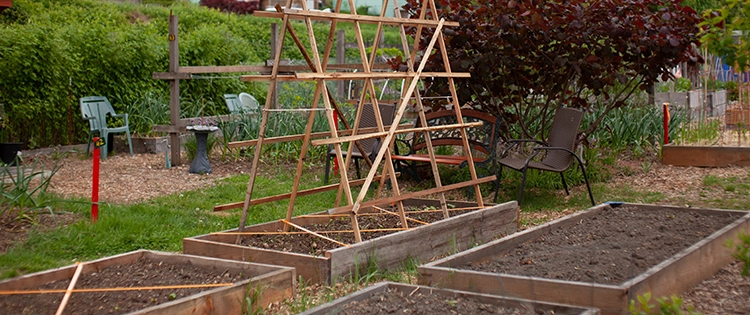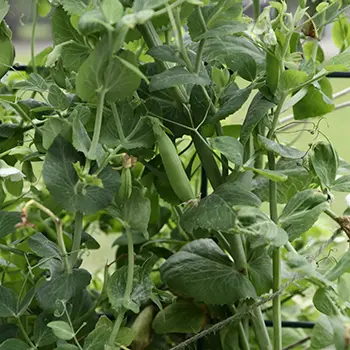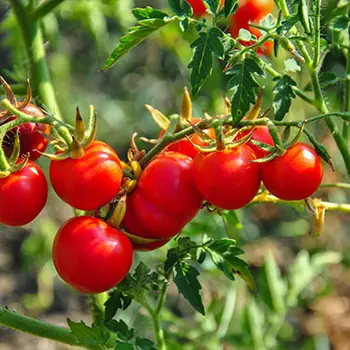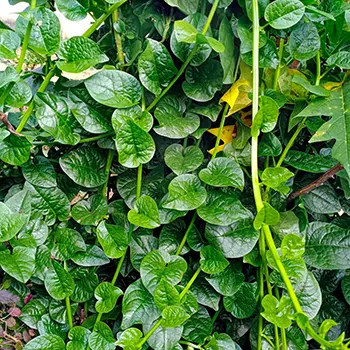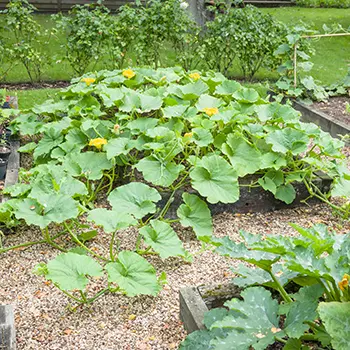Imagine a garden where vegetables grow upwards, saving space and making your garden look beautiful. Vertical vegetable gardening has many benefits, like using space well, easier harvesting, and better pest control. But which vegetables grow best this way?
In this article, I’ll share ten climbing vegetables that do well growing up. Each one adds something special to your garden. So, let’s discover these wonderful climbers!
Sugar Snap Peas
Sugar snap peas are a great choice for your garden if you live in a place with cool or mild weather. These veggies grow in 60 to 70 days and need little care.
Their strong tendrils wrap around trellises easily. For the best results, plant the seeds in early spring or late summer. Make sure the soil drains well, has a pH level between 6.0 and 7.5, and is enriched with lots of organic compost.
Pole Beans
Looking for a climbing vegetable that grows well in warm weather? Try pole beans. These beans grow quickly, leaving space for other plants. You can plant them in one corner and grow shade-loving plants like potatoes or peppers under their vines.
To grow pole beans, plant the seeds 2 inches deep and 6 inches apart in late spring, after the last frost and when the soil is warm. Also, put up a strong trellis before planting to support the vines.
Tomatoes
Tomatoes are common in many gardens and can also grow well in upright gardens. There are different kinds: some stay small and neat, while others, called vine tomatoes, like to climb.
When you grow tomatoes on a trellis, you need to watch them closely. When the plants are small, their flexible stems can easily climb the frame. But as they grow bigger and stronger, they can break if not well supported. So, spend a few minutes every few days helping your tomato plant climb safely.
Yardlong Beans
Yardlong beans, also known as asparagus beans, are great climbing veggies. Their long vines can grow up to 6 feet tall with a trellis. Some people grow these beans on the ground, but this can attract pests like potato bugs.
Growing yardlong beans on a trellis is a smart idea. It helps keep pests away and makes picking them easier. The beans hang down, making them easy to spot among the leaves, so you won’t miss any during harvest.
Malabar Spinach
Malabar spinach loves warm weather and starts giving you tasty leaves just four to six weeks after planting. The best part is that it keeps growing all summer, so you can keep harvesting. Once it reaches the trellis, it climbs on its own without any help.
For happy Malabar spinach, make sure it gets plenty of sunlight, about six hours a day. Also, water it regularly, especially in hot and dry weather, to keep the soil moist and the leaves juicy.
Cucumbers
Cucumbers are great climbers and love growing upwards. Their tendrils easily grab onto trellises. Growing cucumbers vertically saves space, gives you straighter fruits, and reduces pests.
To start, plant cucumber seeds or seedlings about an inch deep and 12 inches apart. Cucumbers love warmth, so give them plenty of sunlight. Keep the soil moist, especially when it gets hot, to help them grow healthy and tasty.
Related: Can You Plant a Grocery Store Cucumber?
Winter Squash
Winter squash, like butternut or acorn squash, can climb and save garden space, adding a unique look to your garden.
To grow them vertically, plant the seeds in well-drained soil, giving them space to spread. As they grow, guide their vines to climb a strong trellis. With regular care, your squash will be ready to harvest in about 80 to 110 days.
Climbing Peppers
If you want to spice up your vertical garden, climbing peppers are perfect. While most peppers grow bushy, some varieties naturally climb with the right support.
For your vertical garden, choose peppers like Cayenne or Thai Bird’s Eye. They have long, flexible stems that easily cling to trellises as they grow upward.
Melons
Who says you need a big garden to grow your own melons? Melons are great climbers, perfect for vertical gardens. Training their vines to climb trellises saves space and makes caring for them easier.
To grow melons, they need plenty of sunlight, ideally six to eight hours a day, and regular watering to keep the soil moist. You can also use slings or netting to support the fruit as it grows, preventing damage as it gets heavier.
Loofah Gourds
Loofah gourds, also known as luffa or sponge gourds, are amazing additions to any garden. These climbing plants produce long, fibrous fruits that turn into natural sponges after drying, perfect for bathing or cleaning.
To grow loofah gourds, they need strong support like a sturdy trellis for their vigorous vines. Plant them in the sunniest spot in your garden because they thrive in full sunlight.
Vertical gardening saves space and adds beauty to your yard. There are many climbing veggies to choose from, so you can find ones that suit your preferences and needs. Why wait? Start growing these practical and delightful climbers in your garden today!
Veggies You Only Plant Once And Harvest Forever
The Only Food That Grows Almost Faster Than You Can Eat It (Video)
13 Plants That Thrive In Shade

